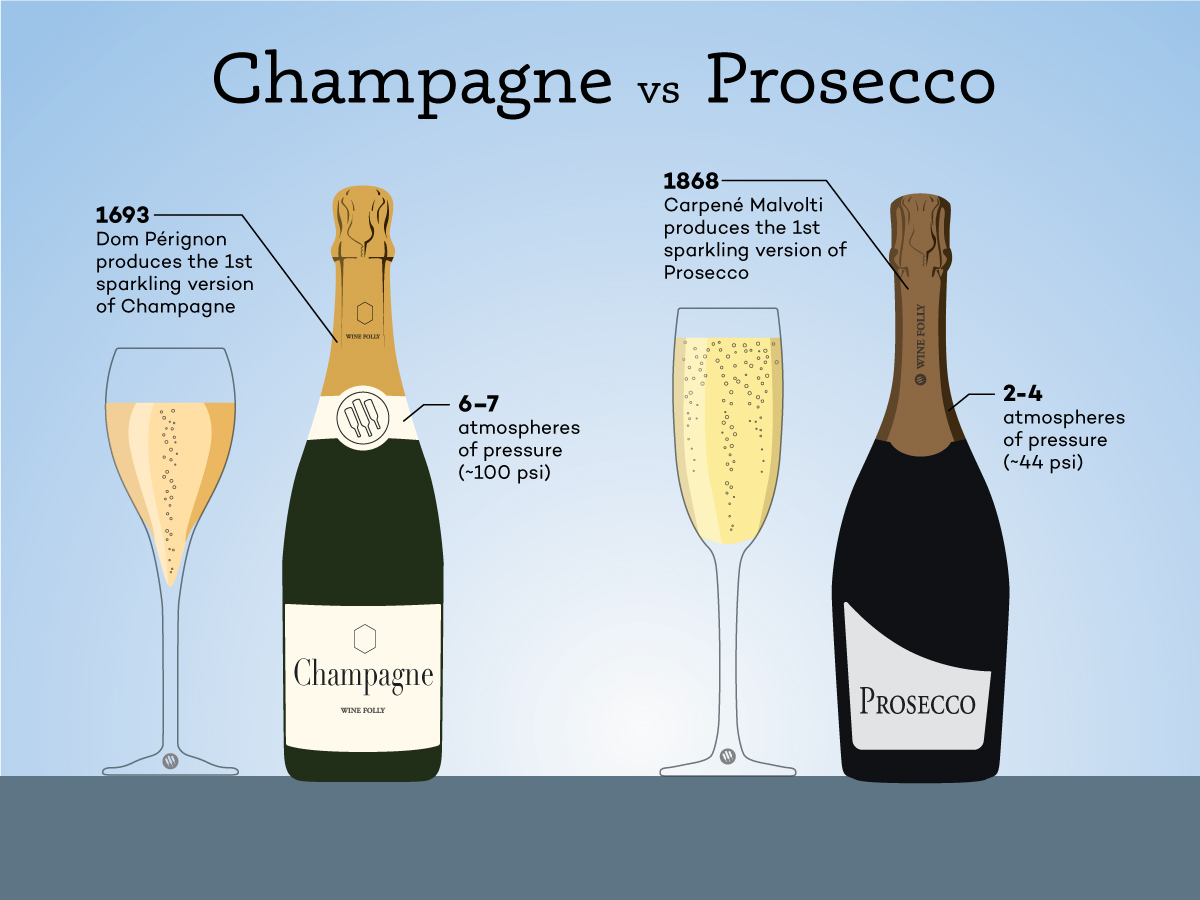Champagne vs. Prosecco: A Resfresher
Let’s compare Champagne and Prosecco. They’re both justifiably crushable and equally worthy of being opened to cheer a milestone, anniversary, or celebrate a promotion at work. Aside from the fact that both are filled with nose-tickling bubbles, Champagne and Prosecco are very different.
Champagne is French, Prosecco is Italian, and both are places. Champagne is NOT a grape, it’s a place that makes sparkling wine called Champagne. Same thing goes for Prosecco: NOT a grape, it’s a place.
•The Champagne region in northern France.The Veneto and Friuli regions in northern Italy.•Both are famously quite steep with hilly terrain.•Both regions are rainy and cool.Champagne Grapes vs. Prosecco Grapes•Champagne’s identity is shaped by a famous trio of grapes: Chardonnay, Pinot Noir, and Pinot Meunier.•Prosecco is characterized by one grape, a highly aromatic white variety called Glera.Method Champenoise and Charmat Method
•Champagne is made using méthode Champenoise, or traditional method as it’s called if used outside the Champagne region. This method means the bubbles are made in the bottle. This process requires hundreds of hours of manual labor and years of aging before bottles can be released. Thus, Champagne’s higher price point on store shelves.•For the “Charmat” method, or tank method as it’s called, the bubbles are created in a giant steel tank. The Charmat method is quicker and more affordable than the traditional method, resulting in a much more affordable bottle of bubbly.Fizzy, Bubbly, and Effervescent
•Both have bubbles•When it comes to what separates Prosecco bubbles from Champagne bubbles, the difference lies in their level of pressure. Champagne’s bubbles have up to double the amount of pressure.Sweetness Levels of Prosecco and Champagne
•They’re both about the same level of sweetness, but because Prosecco is made in tanks without a lot of yeast contact, it seems sweeter than Champagne.How Prosecco and Champagne Taste
•The flavor differences between Champagne and Prosecco are accentuated by contrasting winemaking methods and, of course, sweetness. Champagne will always have more yeast-derived character, with nutty aromas and toasty flavors. Prosecco, on the other hand, has less lees exposure with more emphasis on fruit and aromatic character.Prosecco and Champagne in Cocktails
•When it comes down to commonalities, namely their fizz, Prosecco and Champagne can be used interchangeably when mixing most cocktails.
Cheers,
Felix Albano
PRIME at sky Meadow General Manager




Comments
Post a Comment